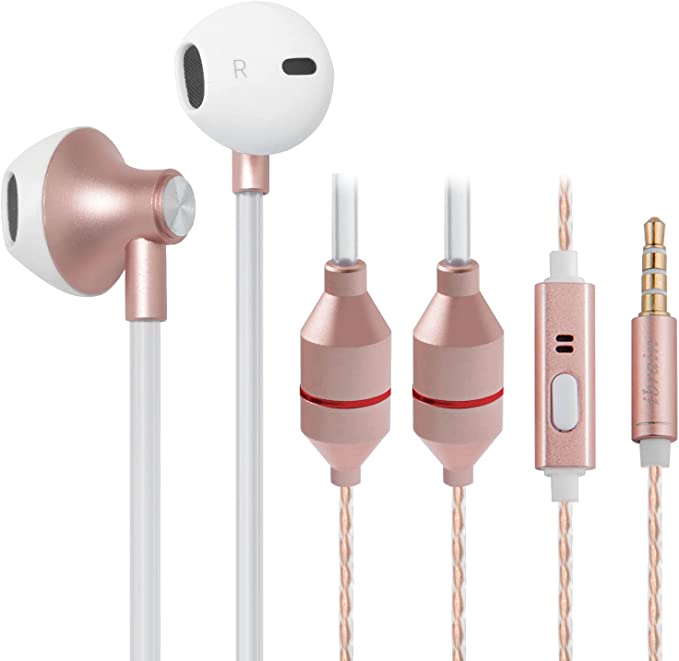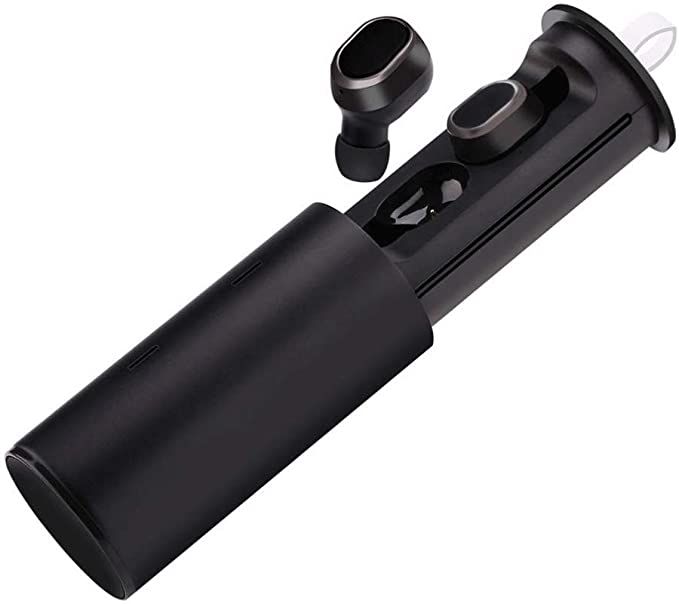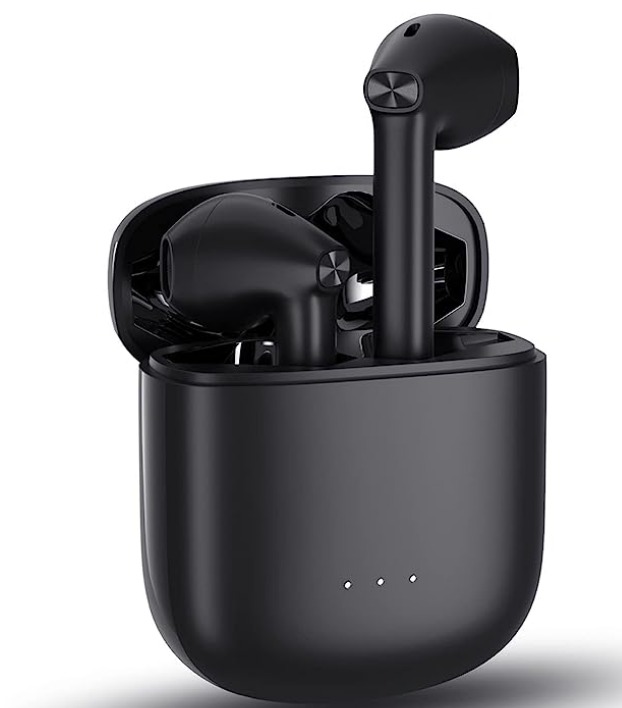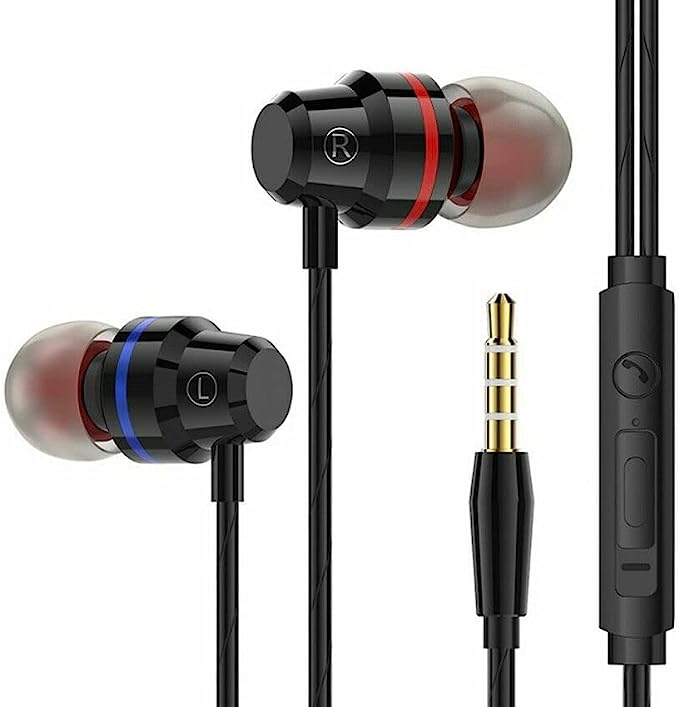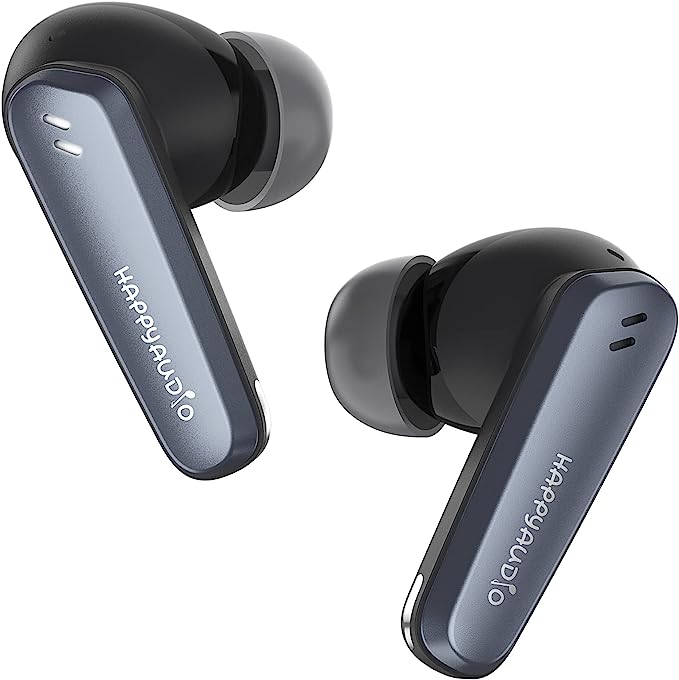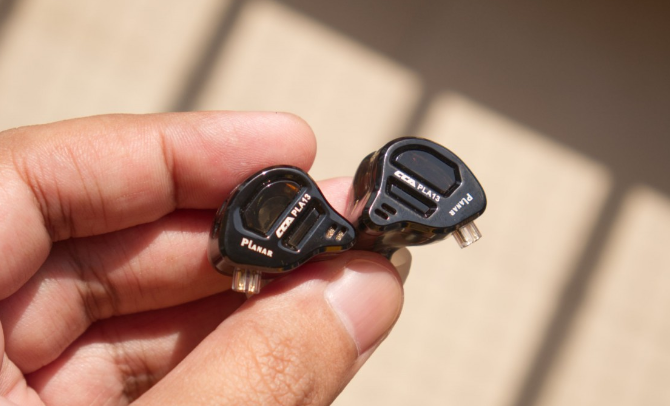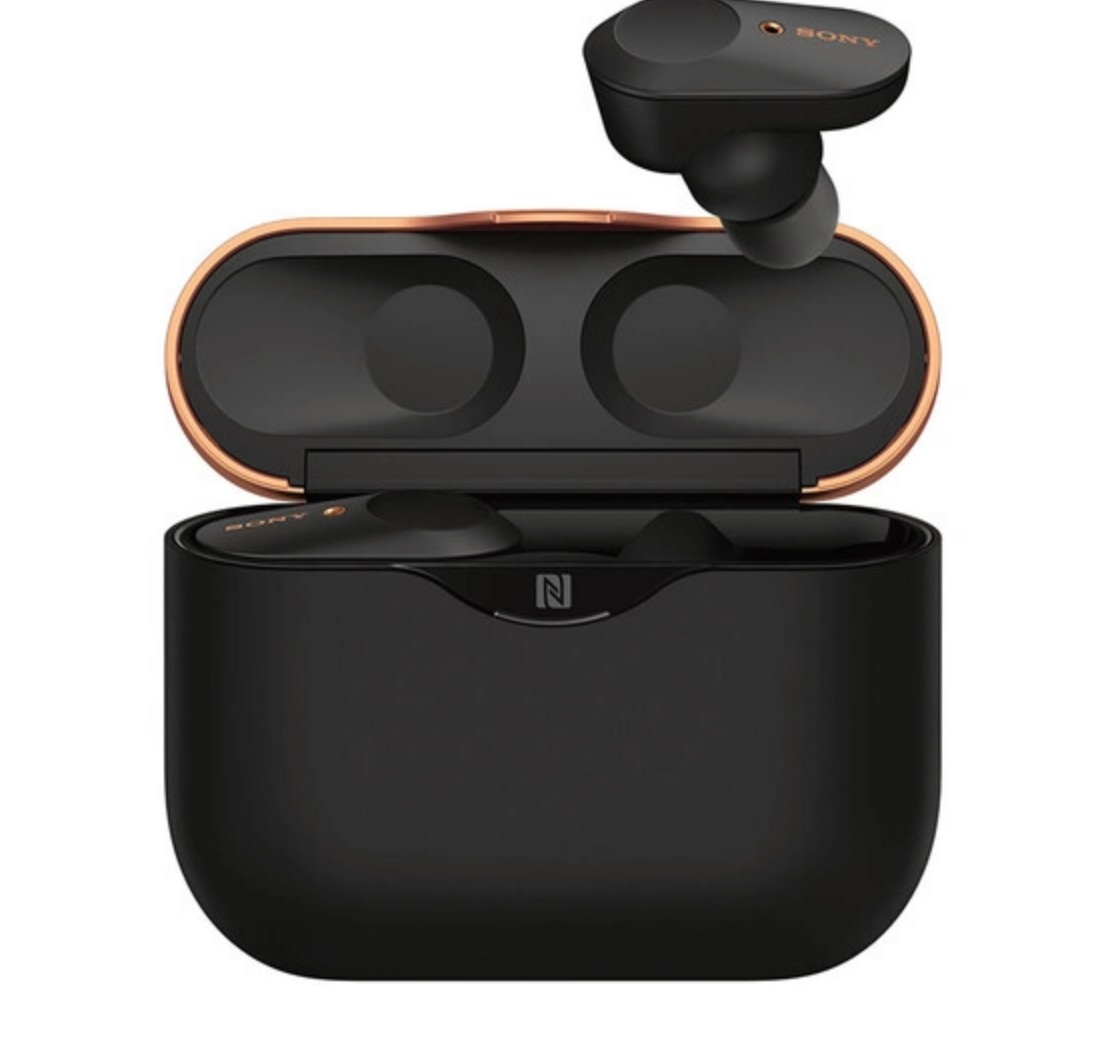ibrain FC12 Air Tube Headphones: A Healthier Listening Experience
Update on June 19, 2025, 5:45 p.m.
We live our lives to a soundtrack, a near-constant stream of music, podcasts, and calls পরিবেশিত directly into our ears. Our headphones are faithful companions, nestled in or on our ears for hours on end. But amidst this ever-present audio immersion, a quiet question sometimes surfaces: could our closest electronic friends be a little gentler on us? This isn’t about ditching our beloved audio, but perhaps about exploring different ways to listen. Enter the ibrain FC12 Air Tube Headphones, a product that isn’t just about sound reproduction, but about an intriguing idea – the concept of “Safe Listening Style.”
At first glance, the ibrain FC12 might look like many other wired in-ear headphones. But delve a little deeper, and you’ll find a fundamental design difference, one that ibrain, a company with over two decades of specialization in this niche, has patented in 48 countries. This is where the “Air Tube” in their name takes center stage.

The Unconventional Journey of Sound: Demystifying Air Tube Technology
Think about typical earbuds. Tiny speakers, the actual drivers producing the sound, are positioned directly in the earbud housing, firing sound waves almost straight into your ear canal. It’s an efficient system, but it means the sound source is as close as it can get to your delicate eardrums.
The ibrain FC12 takes a detour. The miniature speakers are strategically relocated, housed in a small casing further down the cable, away from your ears. So, how does the music reach you? This is where the “air tube” comes into play. From these distant speakers, sound waves are channeled through slender, hollow, and flexible tubes made of a clear material, directly to the earplugs that sit in your ears. Imagine a miniaturized, highly refined version of a doctor’s stethoscope, or the precisely engineered bore of a flute – air itself becomes the primary medium carrying the melody from its source to your ear. It’s a fascinating application of acoustics, where iBrain has evidently dedicated considerable effort, marking their territory as a “pioneer of air tube headphones.”

Whispers of Wellness: The Science Behind “Safer Listening” Claims
The core appeal of the ibrain FC12 lies in its promise of a “healthier listening mode.” This claim rests on two main scientific pillars related to its air tube design.
First, there’s the idea of a gentler touch on your eardrums. By creating physical distance between the sound-generating speaker and the ear, and by transmitting sound through an air column, the direct, sometimes forceful impact of sound pressure waves on the eardrum may be diffused or softened. Traditional headphones deliver sound pressure quite directly. With air tubes, the sound has a different path, which could, for some, translate to a less fatiguing listening experience. While the ultimate loudness is still user-controlled (and crucial for hearing safety – exceeding recommended decibel levels for extended periods can cause hearing damage regardless of headphone type), the manner of delivery is altered. Think of an ocean wave: a direct hit can be powerful, but if it first passes through a series of channels or a breakwater, its force upon reaching the shore might be less abrupt.
Second, the design addresses concerns about Electromagnetic Fields (EMF). All electronic devices, including the tiny speakers in headphones, generate EMF. While mainstream scientific bodies like the World Health Organization (WHO) state that to date, no adverse health effects have been causally linked with exposure to low-level, non-ionizing EMF (the type from most consumer electronics), the “precautionary principle” is often invoked by concerned individuals. The ibrain FC12’s design inherently increases the distance between the EMF-emitting speakers and the user’s head. Physics tells us, via the inverse square law, that the intensity of such fields decreases dramatically with distance. So, moving the speakers even a few inches away can substantially reduce the EMF intensity from that specific component right near your ears. It’s important to note this doesn’t eliminate EMF from your phone or music player, but it does alter the exposure profile from the headphones themselves.

Beyond the Tubes: Crafting the Everyday Experience with FC12
Of course, a novel technology needs to be practical. iBrain describes the FC12 as having a “classic and ergonomic design” aiming for a “perfect fit.” Weighing in at a mere 25 grams, these headphones are intended for “long-lasting performance” and comfort, allowing you to immerse yourself in music “without any discomfort.”
For day-to-day usability, an in-line microphone and volume controller are included. This standard feature lets you take calls or adjust your music without fumbling for your device – a convenience rated fairly well (4.0 out of 5) by users in feature-specific feedback.
Connectivity is achieved via the trusty 3.5mm jack. While many modern smartphones have abandoned this port (requiring an adapter), its presence ensures broad compatibility with a vast array of older iPhones (like the SE/6/6s), iPads, Samsung Galaxy devices (S10, S9, S8), other Android smartphones and tablets, and Windows devices. The manufacturer also mentions that the FC12 uses “metal shielded wires,” designed to bear tensile force and prevent scratching, thereby increasing service life.
Echoes from Users: Interpreting the 3.7-Star Symphony
Real-world experiences, as reflected in customer reviews, paint a nuanced picture. The ibrain FC12 holds an average rating of 3.7 out of 5 stars from 30 global ratings. This isn’t a runaway success, but it indicates a generally positive leaning with some notable caveats.
Approximately 72% of users gave it 4 or 5 stars. Enthusiastic reviewers often highlight the comfort, with one stating, “Ps most headphones hurt my ears, these were very comfy.” The underlying concept of a healthier listening option also resonates well (“I like the concept”), and some users are pleased with the sound quality, calling it “great” or “excellent.”
However, about 29% of ratings fall into the 1 or 2-star category. A recurring theme in these critiques is durability. Reports like “only had these about 6 weeks and already one side only works intermittently” or “Stopped working in 90 days” raise questions about their longevity for some users, despite the “metal shielded wires” claim. Fit and stability also emerge as concerns; some found the earbuds “heavy” or prone to “falling out of my ears,” suggesting the ergonomic design might not be a universal success. Feature-specific ratings reflect this, with comfort and sound quality both averaging 3.3 out of 5. One user even experienced sound dropouts with an iPhone.
From an analytical perspective, these mixed reviews are insightful. The unique air tube construction, while offering potential benefits, might also introduce its own set of challenges. For instance, the earplugs that receive sound from the tubes might require a very specific ear canal shape for optimal stability and sound delivery. Durability issues could stem from the air tubes themselves, their connections, or the conventional wired components.
The Sonic Signature: Does Sound Travel Differently Through Air (Tubes)?
A crucial question for any headphone is, “How do they sound?” The ibrain FC12’s primary marketing doesn’t revolve around audiophile-grade sound reproduction, but rather its unique delivery mechanism. Transmitting sound through a column of air could, in theory, subtly alter its characteristics compared to a speaker driver placed directly near the ear. Some frequencies might be attenuated or emphasized differently.
The subjective nature of audio perception means what sounds “good” varies greatly from person to person. While some users found the sound “excellent,” others were less impressed. It’s plausible that the air tube system, while innovative for its intended purpose, might not compete with traditional headphones in the same price bracket purely on metrics like frequency response flatness or minimal distortion, if those are a listener’s top priorities. The focus here seems to be on a different kind of “quality” – one tied to a potentially healthier interaction with sound.
The $22.99 Question: Weighing Value in a Health-Conscious World
With a price tag of $22.99, the ibrain FC12 headphones are relatively accessible. This allows curious consumers or those specifically seeking alternatives due to comfort or health concerns to try the technology without a significant financial commitment. The value proposition isn’t necessarily about getting the absolute best audio fidelity per dollar, but rather about investing in a “Safe Listening Style” and the patented technology that aims to deliver it.

Harmonizing Health and Technology: A Final Thought
The ibrain FC12 Air Tube Headphones are a compelling example of how technology can be rethought to address modern well-being concerns. The patented air tube system offers a scientifically plausible approach to potentially reduce direct acoustic impact on the eardrums and minimize EMF exposure from the earpieces themselves. It’s an innovation that encourages us to think more consciously about how we consume audio.
However, as with any technology, it’s not a panacea. The mixed user feedback regarding durability and fit underscores that practical execution and individual experiences can vary. Furthermore, the most significant factor in auditory health remains responsible listening habits: managing volume levels and listening duration. No headphone, regardless of its design, can protect against the damage caused by excessively loud sound over long periods.
Ultimately, the ibrain FC12 headphones offer a unique choice for a specific type of listener – one who prioritizes the potential for a gentler, EMF-distanced audio experience and is willing to explore a less conventional design. Understanding the science behind their operation, alongside a clear view of their practical strengths and weaknesses, empowers you to make an informed decision that harmonizes your love for sound with your well-being.
